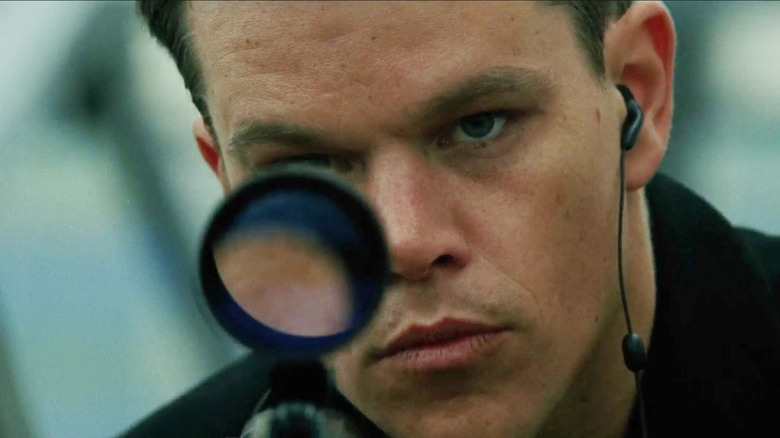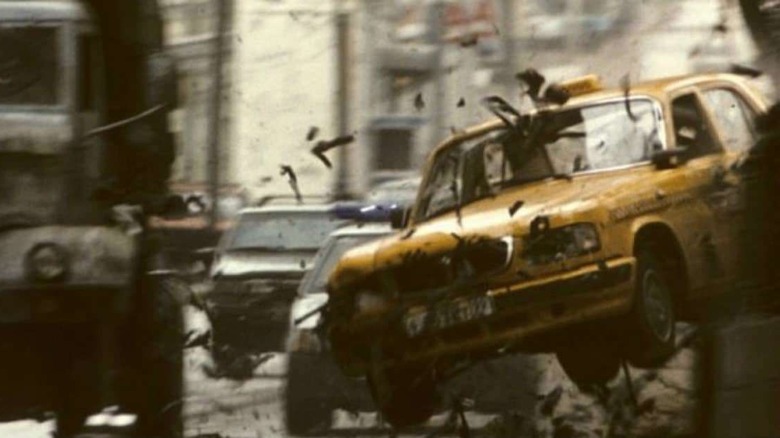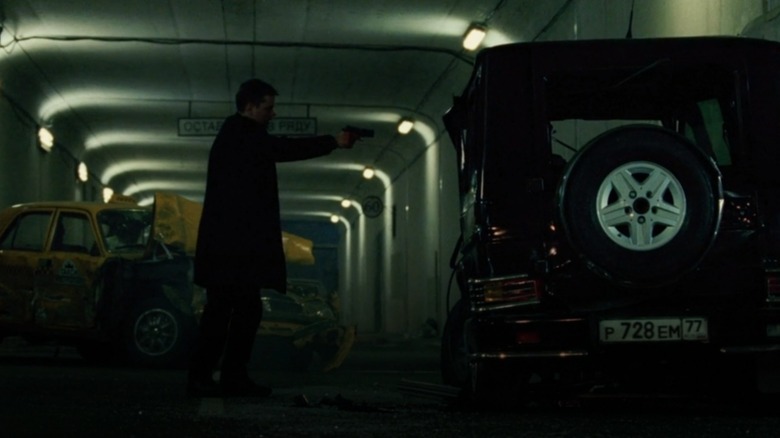
(Welcome to Best Action Scene Ever, a column dedicated to breaking down the best, most effective action sequences throughout the genre. In this edition, we're breaking down one of the greatest car chases ever put to film in "The Bourne Supremacy.")
Movies and television in the early 2000s might as well be a time capsule, forever preserving a uniquely tumultuous time in U.S. and world history like a mosquito in amber. "The Lord of the Rings" movies will probably always be upheld as the earliest and most significant form of post-9/11 cinema, providing exactly the kind of fantasy escapism that so many audiences were suddenly desperate for on a cellular level. But on the extreme other end of the spectrum, one action franchise had no choice but to steer directly into the skid, addressing some of the most fraught and deeply uncomfortable aspects of the United States government that nobody wanted to talk about.
In stark contrast to how dated so many other pop culture contemporaries felt during those years, the "Bourne" movies have withstood the test of time precisely because of how of their time they are -- not just politically, but largely pioneered by the now-ubiquitous use of intentionally shaky handheld camerawork, as well.
While the technique will simply never win over a certain portion of the moviegoing population, it's hard to argue that it wasn't used with expert-level precision and purpose in these movies about an amnesiac assassin trying to piece together his former life. Nowhere does that intersection between form and function collide with greater intensity than in the final car chase in director Paul Greengrass' "The Bourne Supremacy," a frenzied and frenetically-edited sequence that shows off the most intense thrills this franchise has to offer.
The Scene
After the events of "The Bourne Identity," former government assassin Jason Bourne (Matt Damon) has dropped off the grid entirely and retreated to a peaceful life in Goa, India, with his lover Marie (Franka Potente) ... until a mysterious hitman named Kirill (Karl Urban) shatters his early retirement and inadvertently guns down Marie in a botched attempt to frame Bourne for the killings of another. The strength of "Supremacy" comes from keeping both Bourne and audiences a step behind the true bad guys of the film (Russian mobsters and one very obviously evil Brian Cox), putting us on the defensive and subsequently raising the stakes.
By the time the sequel enters its third act, it's clear that Bourne won't be able to escape either international agencies or the Russian contract killer for much longer -- especially when he travels to Russia, attempts to pay a visit to an unknown individual from his past, and only manages to end up on the radar of both Kirill and the police for his troubles. One well-placed bullet to the shoulder and an impromptu medical triage later, a visibly frantic Bourne hijacks a Russian taxi just as the authorities catch up to him and sets in motion a disorienting, unbearably tense, yet perpetually-thrilling chase through the streets of Moscow.
Why It Works

How do you stage an effective action scene with a protagonist who might as well be an unstoppable killing machine? Well, you can immediately tilt the odds against his favor by placing him in a highly-charged emotional state, inflicting some damage upon him, and then setting multiple antagonists upon him to prevent him from accomplishing his personal quest for redemption. That's exactly the scenario that Paul Greengrass and his action team set up for Bourne in the final act of the sequel. Though some may complain about the chaotic camera movements and messy editing that never once lets audiences linger on any one shot, closer inspection reveals how this was the absolute best approach to capturing the needs of the character and the story.
With only Matt Damon's pained expressions and a few carefully selected establishing shots to keep viewers grounded, the sequence relies mostly on kinetic editing and a forward sense of momentum to guide us along an impossibly complex sequence. Lesser directors may have been overwhelmed by the sheer volume of information needed to convey to audiences -- multiple parties with entirely different motivations are hunting Bourne's vehicle through streets filled with innocent bystanders, all while he needs to stop his bleeding and escape in one piece. Greengrass, however, maintains an incredibly fine line.
Here, the action is simplified to its barest elements, all while increasing the obstacles standing in Bourne's way to escape. Incredibly complicated geography in an unfamiliar city is communicated through fast cuts and a perspective that constantly shifts from pursued to pursuers. Sudden narrative twists and turns (like Kirill arriving out of nowhere to clip Bourne's car at an intersection) are given slightly more time to breathe, using Damon and Karl Urban's perfectly synchronized reaction shots to convey story without dialogue.
The Key Moment

It takes almost half the sequence for the tension and stakes of the chase to finally dawn on Bourne himself. This isn't just an escape from anonymous Russian police, but perhaps his final encounter with the hitman who killed Marie at the beginning of the film and a last chance to make him pay. In one of the sequence's finest moments, the action literally stops so that Bourne and Kirill can share one blistering look at each other from their respective cars, providing a shot in the arm for a 6-minute chase that could've easily become numbing by now.
All but using his stolen taxi as a weapon, Bourne whittles down the police and special units behind him until only Kirill remains in pursuit. Here, the key decision is made to funnel the action down in both scope and scale from the open-air streets to a lengthy underground tunnel that instantly makes every character choice and impeccably choreographed bit of vehicular mayhem hit that much harder. Surrounded by cars that quickly turn into collateral damage and boosted by John Powell's propulsive original score, the sequence reaches its absolute peak of "How the heck did they film that?" territory as cars are battered into walls and into each other without the movement and flow of the action ever slowing down in the slightest. The magic of this sequence crescendos to a brilliantly-staged reversal that allows Bourne to gain the upper hand and end the chase in decisive, bone-crunching fashion.
None of it would've been effective without the editing, stunt driving, music, choreography, and every other facet of filmmaking working in perfect concert to deliver one of the finest car chases ever filmed. Even post-"Mad Max: Fury Road," I'm hard-pressed to say this sequence has ever been topped.
Read this next: The 14 Greatest Action Movies Of The 21st Century
The post The Moscow Car Chase In The Bourne Supremacy Is The Best Action Scene Ever appeared first on /Film.
0 Commentaires